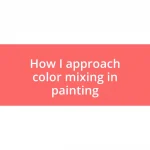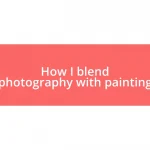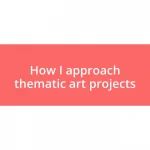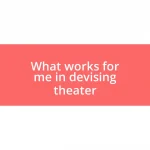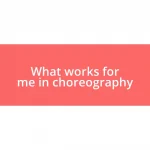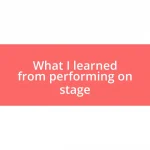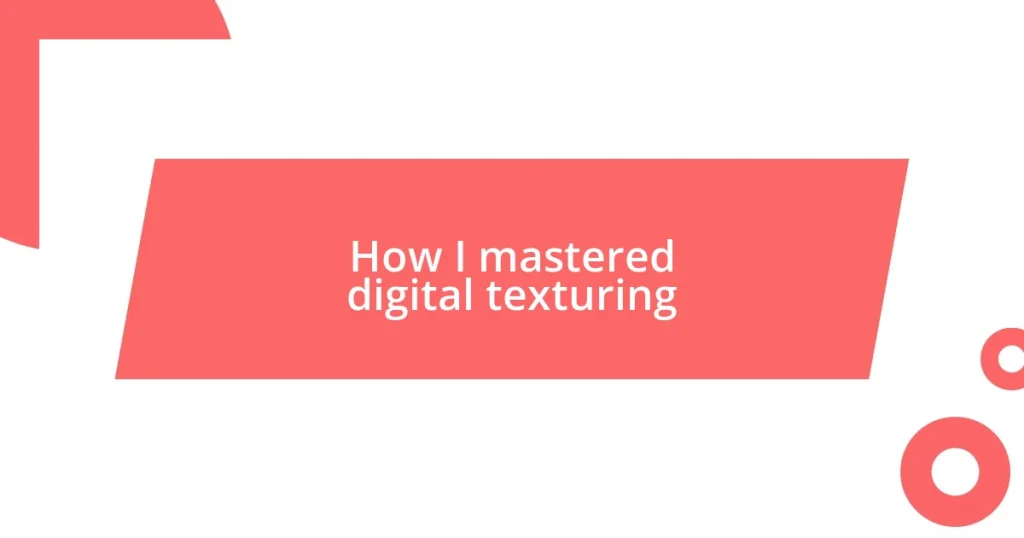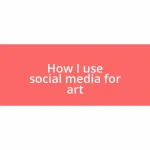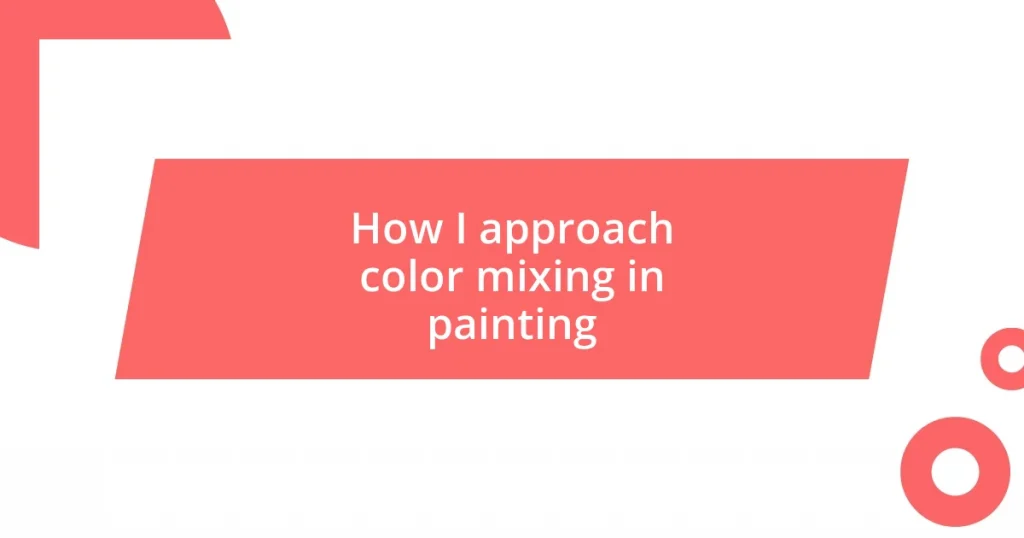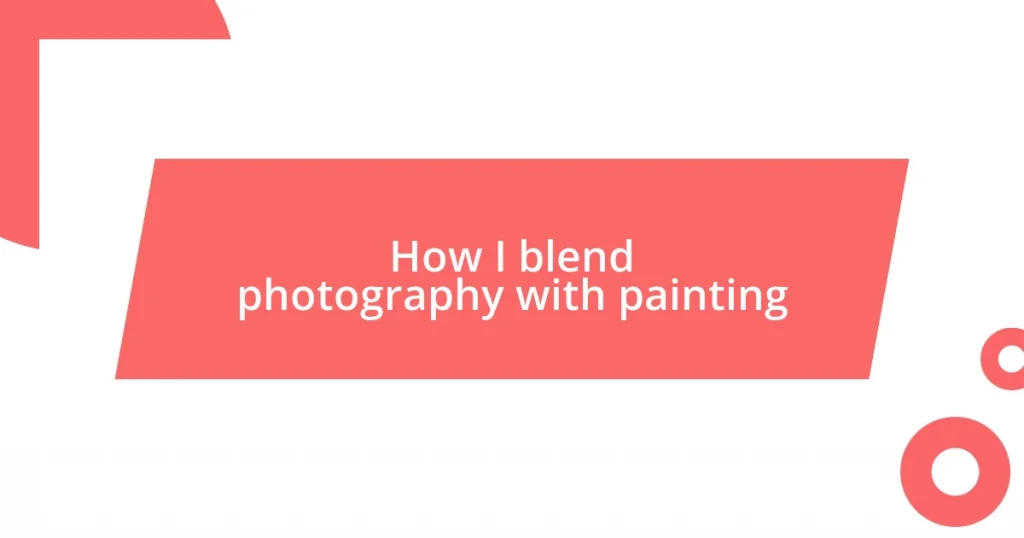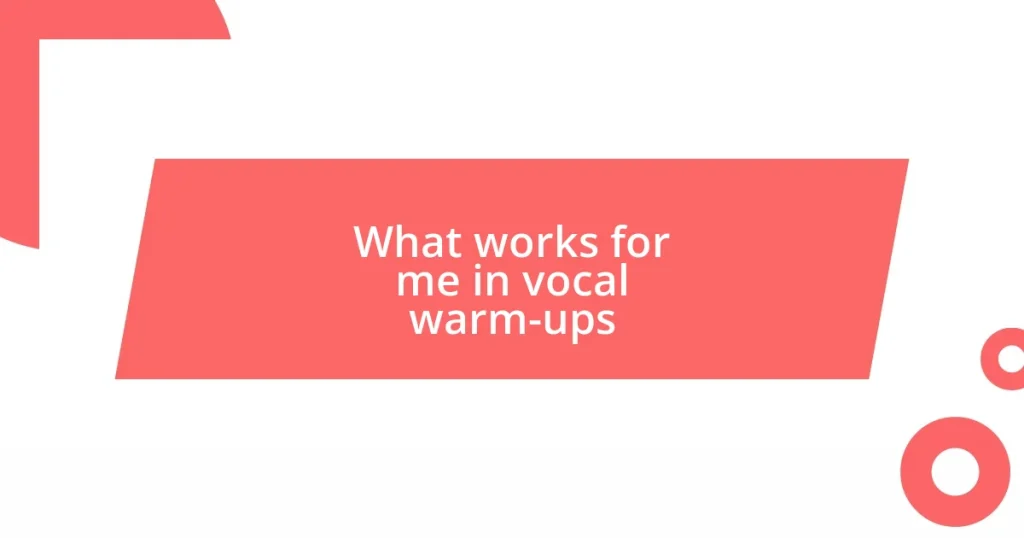Key takeaways:
- Understanding texture maps and different digital tools such as Adobe Substance Painter and Quixel Mixer is crucial for effective digital texturing.
- Adopting a systematic workflow, including planning, iteration, and effective use of references, enhances creativity and output quality.
- Showcasing your work through streamlined portfolios and social media can lead to meaningful interactions and professional opportunities in the digital art community.
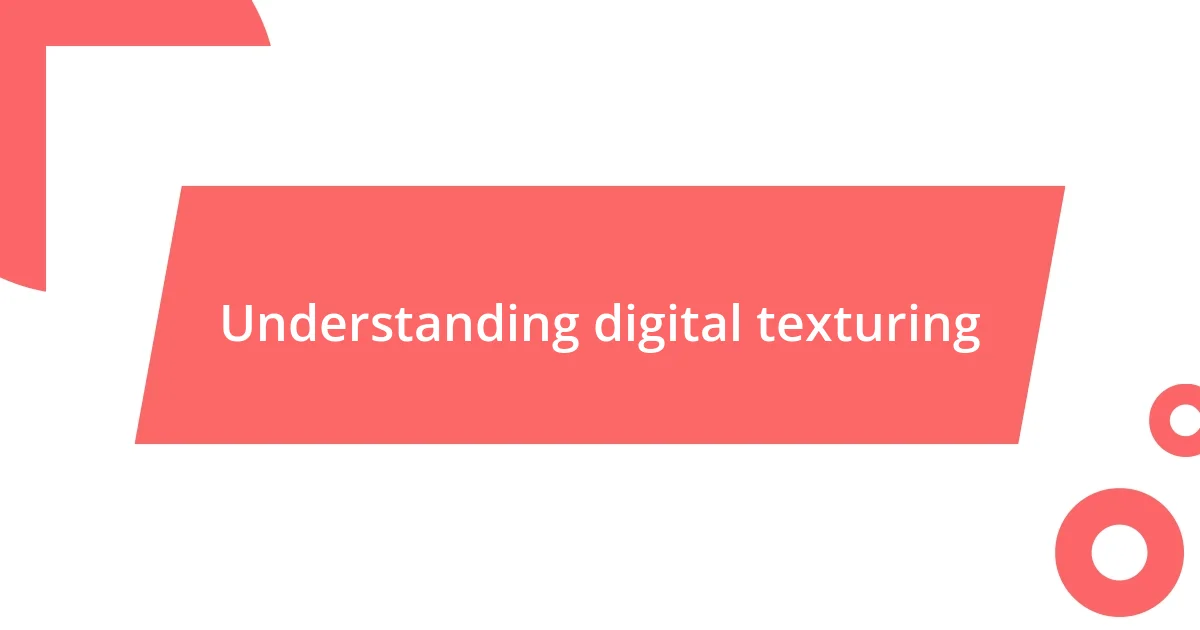
Understanding digital texturing
Digital texturing is the art of adding surface detail and color to 3D models, transforming them from simple shapes into lifelike objects. I still remember the excitement I felt when I applied my first texture to a model; it was like breathing life into a statue. Have you ever marveled at the subtle details in your favorite video game character? That’s the magic of digital texturing at work.
At its core, digital texturing involves understanding how light interacts with surfaces to create depth and realism. I often found myself experimenting with various techniques, from bump mapping to UV unwrapping, and each method opened a new door to creativity. This experimentation not only honed my skills but deepened my appreciation for how textures tell a story, conveying the material’s age, wear, or even a character’s mood.
One critical element to grasp is the importance of texture maps, which serve as visual guides that dictate how colors and details are applied. Early on, I struggled with this concept, feeling overwhelmed by the variety of maps available. But then I realized that each map—like diffuse, specular, and normal—has a unique purpose that significantly impacts the final look. Have you considered how understanding these differences can elevate your own creations?
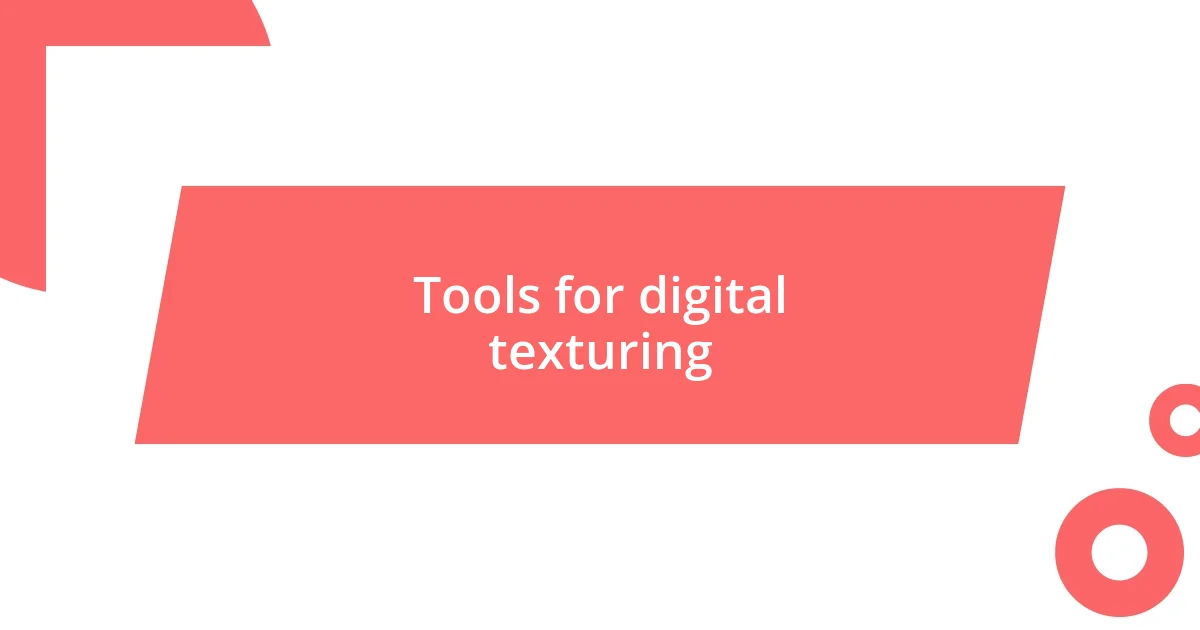
Tools for digital texturing
Digital texturing relies heavily on a variety of specialized tools that can enhance creativity and streamline workflows. Personally, I’ve found that software like Adobe Substance Painter offers an intuitive interface for painting textures directly onto 3D models, which makes the process feel almost like digital sculpting. Meanwhile, Blender’s built-in texture painting and UV mapping tools allowed me to maximize workflow efficiency while also experimenting with different artistic styles.
When it comes to texture creation, tools like Quixel Mixer and Mari stand out for their robust functionalities. I remember using Quixel Mixer for the first time and being amazed at how easily I could blend materials and create stunning photorealistic textures. This versatility has helped me push the boundaries of my texturing capabilities, enabling me to produce richer environments and characters in my projects. Such experiences taught me the importance of choosing the right tool based on the project needs.
For those entering the field, it can be daunting to navigate the plethora of available tools. I once spent hours trying to figure out which software would best suit my needs, only to discover that trying out a few different programs was the best approach. While each tool has its strengths, what matters most is how comfortable you feel using them. Emphasizing personal preference can be a game changer when investing time in digital texturing.
| Tool | Strengths |
|---|---|
| Adobe Substance Painter | Intuitive painting on 3D models, great for detailed textures |
| Blender | Comprehensive suite with UV mapping and texture painting |
| Quixel Mixer | Easy blending of materials, photorealistic texturing capabilities |
| Mari | Powerful for complex textures, widely used in the industry |
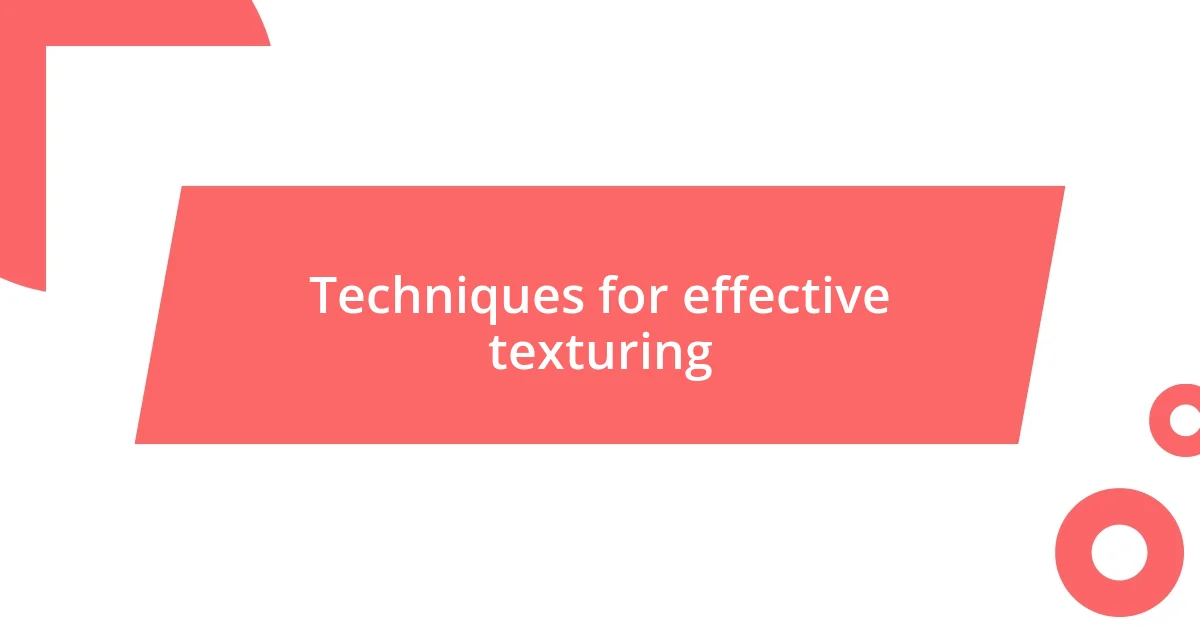
Techniques for effective texturing
One technique I found invaluable is procedural texturing. Initially, it felt overwhelming, but once I experimented with nodes in programs like Substance Designer, I was hooked. The ability to generate complex textures through parameters allows for endless customization without the need for extensive image editing. I still recall the thrill of adjusting a few sliders and watching a texture evolve right before my eyes—it felt like crafting a piece of art where I controlled every detail.
To effectively utilize this approach, consider the following techniques:
- Layering: Combine multiple texture layers to create depth and richness.
- Using Masks: Masks help in refining details, allowing textures to blend seamlessly.
- Parameter Adjustments: Use sliders or values to tweak textures on the fly, embracing spontaneity.
- Tileable Textures: These can greatly enhance efficiency by allowing repeating surfaces without visible seams.
- Color Grading: Adjust hues to match the mood or setting, adding an emotional layer to your work.
Another technique I advocate for is the use of reference images. In one of my projects, I wanted to recreate an ancient stone wall, and I found a wealth of inspiration online. These images served not just as visual guides but as a source of motivation. They prompted me to examine details and imperfections that I might have otherwise overlooked. I discovered that closely observing natural textures, even in everyday life, allowed me to infuse authenticity into my creations. When diving into texturing, these references can provide clarity and direction.
Here are some practical tips for using references effectively:
- High-Quality Images: Always look for clear, detailed reference images that showcase textures well.
- Diverse Sources: Draw from various categories, such as nature, architecture, and art, to broaden your understanding of texture.
- Study Real-Life Materials: Nothing beats getting up close to real textures; it’s a brilliant way to learn.
- Take Notes: Document your observations and techniques as you study, which aids retention.
- Incorporate Your Discoveries: Blend insights from references into your work, allowing personal touches to shine through.
By intertwining these techniques into my workflow, I’ve continually evolved my texturing skills, transforming not just the models but also my approach to creativity.
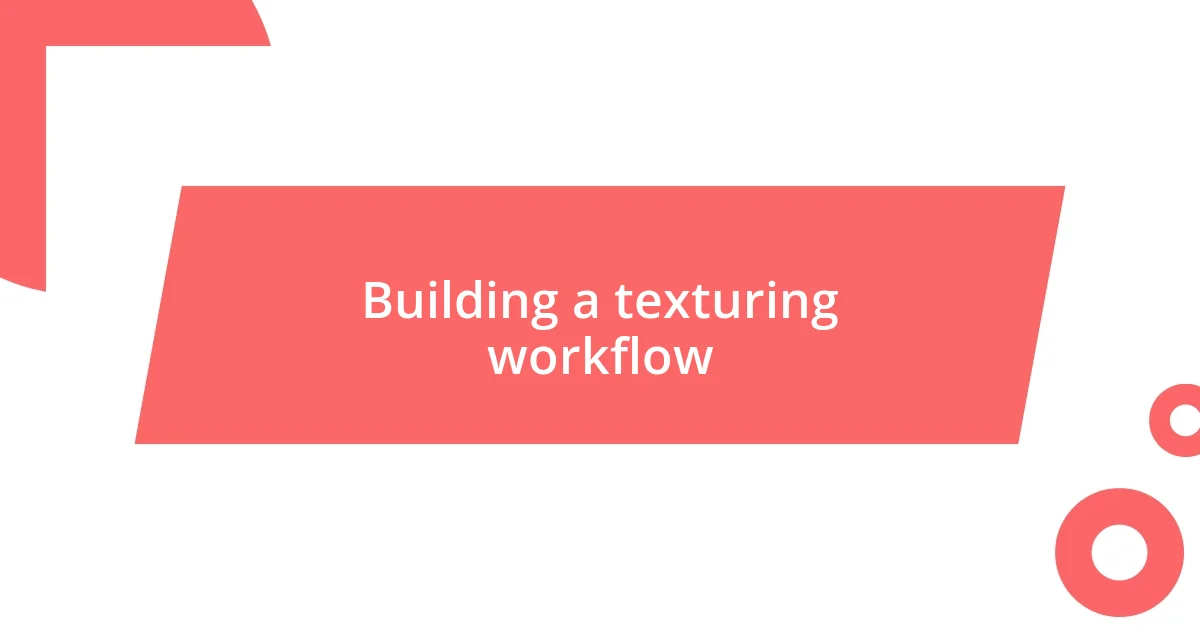
Building a texturing workflow
Building a solid texturing workflow is essential for any digital artist. From my experience, I realized that the key is to develop a systematic approach that feels intuitive. When I first started, I implemented a clear pipeline: planning the textures, gathering references, and then diving into the actual texturing. This structure not only kept me organized but also helped me stay motivated throughout the project, almost like following a recipe where each step builds on the last.
I’ve learned that it’s helpful to set up a consistent naming convention for your files and layers. Early on, I found myself lost in a sea of “Texture01” and “MaterialV2” files. By adopting a more descriptive system, I felt much more in control of my workflow. It’s amazing how simple practices like this can alleviate frustration and free up mental space to focus on creativity.
Another insightful moment came when I realized the power of iteration. Initially, I was hesitant to revisit textures after the first pass, fearing it would reflect poorly on my skills. Yet, through practice, I came to understand that the best textures often arise from continuous refinement. Embracing this mindset transformed my work—why settle for “good enough” when I could strive for greatness? I encourage you to reflect on your own workflow: are there aspects you feel reluctant to revisit? It might just lead to unexpected breakthroughs.
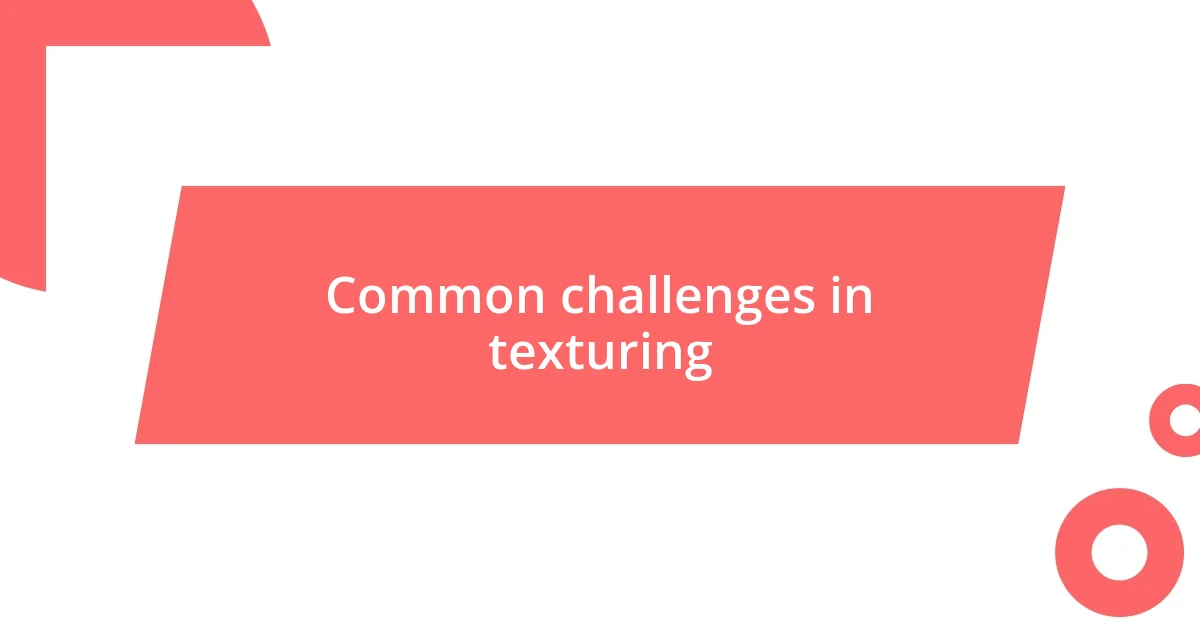
Common challenges in texturing
When it comes to digital texturing, one common challenge is achieving realistic detail without overwhelming the viewer. I remember a project where I aimed for a weathered brick wall but found myself adding too many scratches and imperfections. It’s a delicate balance—overdoing it can detract from the texture’s impact. Have you ever faced that moment when too many details just muddled your vision? I learned that sometimes, less is more. Prioritizing key features can lead to a more coherent and powerful texture.
Another hurdle is managing texture resolutions effectively. Early in my career, I often used high-resolution images indiscriminately, which led to sluggish performance in programs. The frustration was evident during presentations; the textures would lag, making my work look less polished. This taught me the importance of optimizing texture sizes for the intended platform. By striking a harmonious balance between detail and performance, I not only improved my workflow but also my final outputs. Have you found yourself in a similar predicament, where quality and efficiency seemed at odds?
Finally, blending multiple textures seamlessly can be quite the headache. I distinctly recall a project where I wanted to create a composite of stone and moss. The challenge was making them interact naturally, avoiding that ‘stuck-on’ appearance that screams inauthenticity. Got stuck in similar situations? I soon discovered that using masks creatively allowed me to refine those intersections, creating a more organic blend. Embracing this approach transformed my texture applications, leading to results I was genuinely proud of.
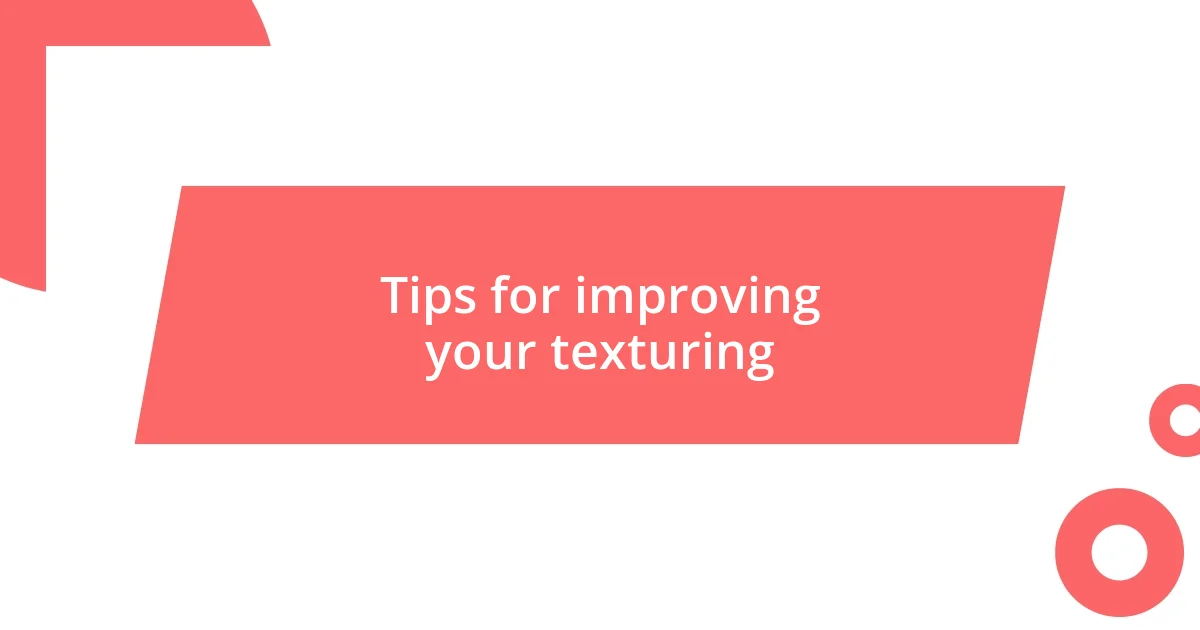
Tips for improving your texturing
To elevate your texturing skills, I can’t stress enough the importance of reference gathering. Over the years, I’ve amassed a library of images, textures, and materials that inspire my work. I often go on texture hunts, snapping photos of everything from rusty metal to cracked concrete. Have you ever considered how the little details in your surroundings can spark creativity? This practice not only boosts my realism but also drives my artistic vision, helping me see everyday objects in a new light.
Experimenting with different texturing software can also open up a world of possibilities. I remember the first time I dabbed my toes into procedural texturing; it was like discovering a hidden room in a familiar house. The freedom to manipulate textures in real-time shifted my approach to design. Have you explored other tools, or are you sticking to the same ones? Sometimes, taking a short detour can introduce techniques that radically change your workflow for the better.
Lastly, don’t shy away from seeking feedback. I used to fear criticism, viewing it as a personal attack on my abilities. However, I came to realize that constructive feedback is invaluable. During one particular project, a colleague pointed out that my textures felt flat. It stung at first, but I took a step back and made adjustments, resulting in a more dynamic outcome. Engage with others—have you found a supportive group to share your progress with? Surrounding yourself with peers who offer insights can sharpen your skills immensely.
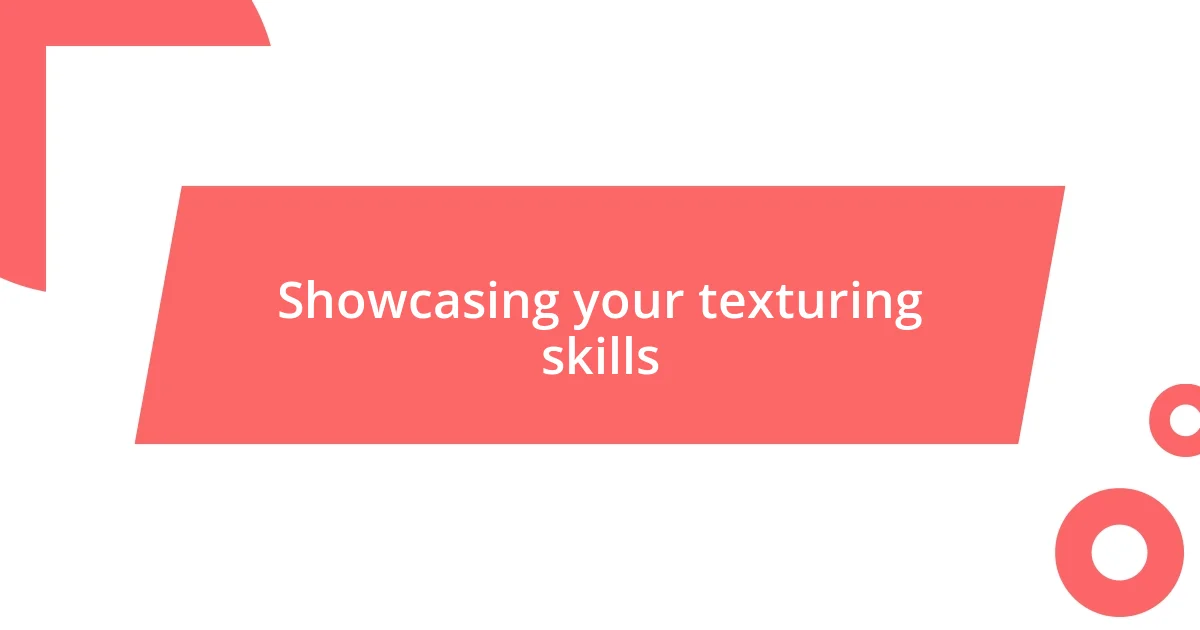
Showcasing your texturing skills
When it comes to showcasing your texturing skills, nothing beats having a strong portfolio that reflects your unique style and versatility. I vividly remember the moment I decided to streamline my portfolio, focusing on projects that highlighted my strengths. It seemed daunting at first—how do I choose what to include? However, curating my work to display not just various techniques but also a clear artistic voice made a significant difference in how I was perceived by potential clients. Have you considered what your portfolio communicates about you?
One effective way to showcase your skills is through social media platforms like ArtStation or Instagram. I started posting process videos of my texturing projects, where I shared my techniques and the story behind my work. Seeing likes and comments roll in was exciting, but more importantly, it instigated meaningful conversations with other artists. Have you thought about how sharing your journey might resonate with others in the community? Those interactions often lead to collaboration and inspiration that can propel your work further.
Don’t underestimate the power of participating in challenges or contests. I remember jumping into a texturing challenge where I had to replicate a vintage car model. The pressure was on, and I felt a rush of excitement and nerves! But as I worked through the layers of paint and rust, I realized it wasn’t just about winning; it was an opportunity to push my boundaries and learn new techniques. Have you ever entered a challenge that surprised you with what you could achieve? These experiences not only build skills but also create a sense of accomplishment and community, showcasing your dedication and creativity to a broader audience.
